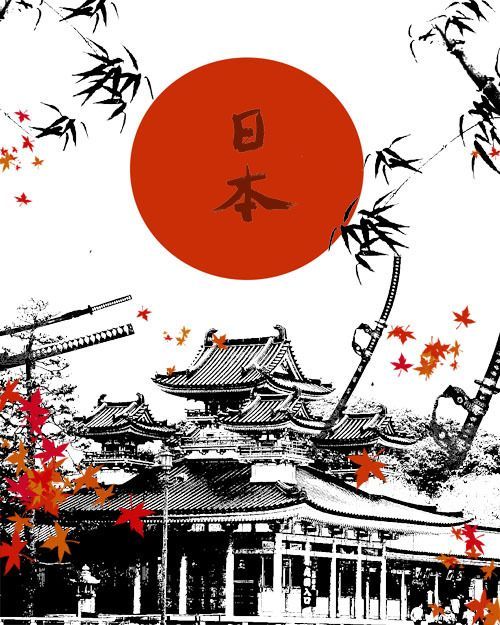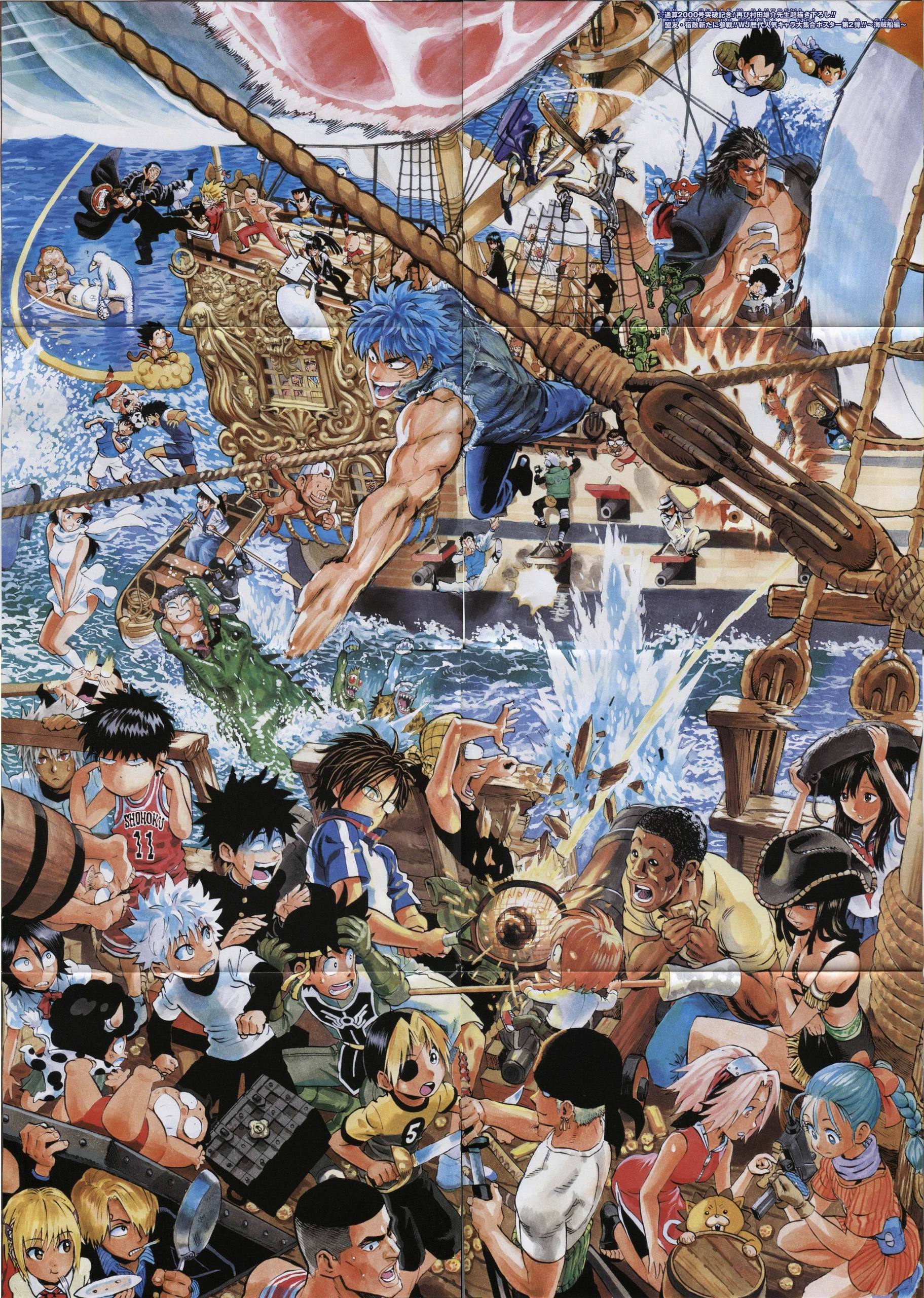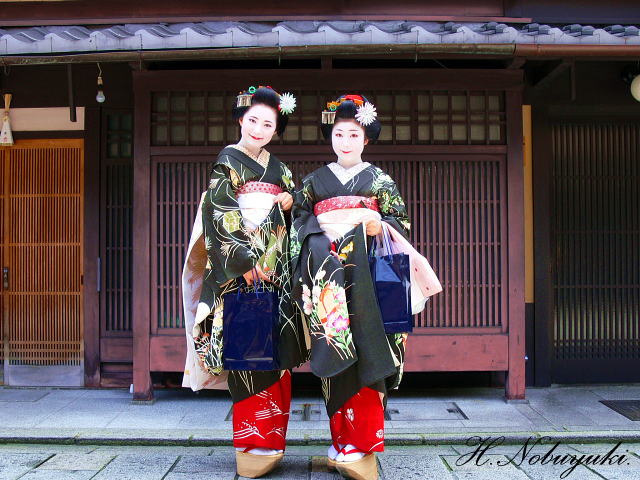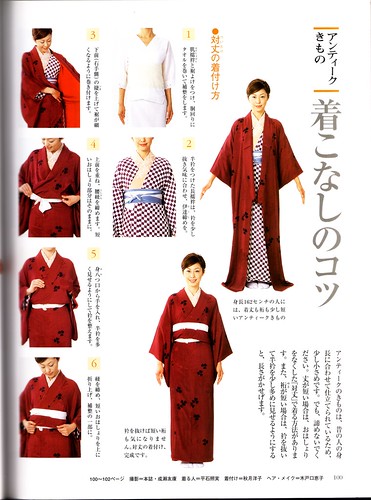
|
Date : Thursday, December 9, 2010 Time : 4:50 PM References o Advameg, Inc. (2010). Countries and Their Cultures. Culture of Japan. Retrieved December 10, 2010, from http://www.everyculture.com/Ja-Ma/Japan.html o japan-guide.com. (1996-2010). Japanese customs and traditions. Tradition. Retrieved Decemb.er 10, 2010, from http://www.japan-guide.com/e/e638.html o Shinshu University. (1994-2010). Culture of Japan. Retrieved December 10, 2010, from http://markun.cs.shinshu-u.ac.jp/japan/index-e.html o Choo, D. (1994-2010). culturejapan danny choo network. Culture:Japan. Retrieved December 10, 2010, from http://www.dannychoo.com/post/en/25651/Culture+Japan.html o Japan-101.com. (2003-2005). Japan's History. Japan's History - Complete Timeline. Retrieved December 10, 2010, from http://www.japan-101.com/history/history_timeline.htm o Lim, S.L M. (March 14, 2000). Writings. Tradition & Change – Examining Gender Roles in Japan. Retrieved December 10, 2010, from http://marklsl.tripod.com/Writings/japan.htm o tv tropes. Subcultures in Japan. Television Tropes & Idioms. Retrieved December 10, 2010, from http://tvtropes.org/pmwiki/pmwiki.php/Main/SubculturesInJapan o Advameg, Inc. (2010). Countries and their culture. Ainu. Retrieved December 10, 2010, from http://www.everyculture.com/wc/Japan-to-Mali/Ainu.html o Kawagoe. (October, 2007). Education in Japan. Retrieved December 10, 2010, from http://www.education-in-japan.info/sub1.html o Japan National Tourism Organization. (2010). Japan National Tourism Organization. Festivals & Events. Retrieved December 10, 2010, from http://www.jnto.go.jp/eng/location/festivals/index.html o Hays, J. (2009). Facts and Details. Recreation in Japan. Retrieved December 10, 2010, from http://factsanddetails.com/japan.php?itemid=786&catid=21&subcatid=143 o Tabuchi, H. (May 8, 2010). The International Herald Tribune. Old vs. new in Japan tourist push; Rush to build attractions to lure foreigners risk's country's soul, some say. o Cho, C.U. (March 2, 2010). The Korea Herald. Travelers Bound for Japan Surge. o Anonymous. (June 7, 2010). The Nikkei Weekly (Japan). Japan’s big travel agencies see sunny holidays ahead.
Date : Time : 4:50 PM Whether tourism caused the commoditization of cultures and traditions Yes. Ainu group is slowly dying out. Because of tourism, the people have shifted away from what they do previously, like fishing and hunting, instead they choose to don their traditional robes, stand under the spotlight and perform for cash. Tourism had taught them the easy way to earn money, but ‘selling’ themselves is certainly not the way to do it. When an indigenous group starts working because of tourism, it might end up ugly. Firstly, because of commoditization, that the Ainu might feel that they wouldn’t might wearing their traditional robes just for tourist to snap some photos and get easy money. But if they were to wear their robes so easily, then where is the tradition in it? And if the government pay for them to perform their rituals or prayers for the public to view, would it still be sacred? In the long-run, their tradition will just slowly corrode away, because of commoditization and the demand from tourism.
Date : Time : 4:36 PM Changes brought about by growth of tourism in Japan Japan used to be very private, in a sense not opened to the other countries because Japan is very strong economically. However, in recent years, Japan had been focusing on their tourism. Such as upgrading their airlines, or local facilities like plans to build a new Aquarium in Kyoto by 2012 to revive the area. Why is there such a need? Simple. Globalization. Globalization is a catalyst of change, that when things change, it either goes well or it’s down the drain. The thing about globalization is that it’s not predictable. People might try to forecast it, but external factors might just pop out and mess it up, like the recent H1N1 outbreak. For Japan, it seeks for a growth in its tourism for both inbound and domestic tourist. By having tourism, Japan becomes more open to other countries and more connected, that Japan had opened its doors to mainland tourist by lowering the annual income requirement for visa in June 4th 2010. And Japan probably sees the opportunities in tourism that because of globalization, more people are traveling, because of various reasons, like cheaper flights, or more efficient travel. In a 2010 survey in South Korea, 20% of the Koreans chose Japan as their holiday destination. Also because of tourism, and this trend Hallyu-Wave, Japan is coming to accept foreign artistes performing in their stages, because these Hallyu stars serves as a magnet to attract inbound tourist. All in all, tourism growth in Japan had made the country a ‘happier’ place, that more foreigners are coming in and out of the country, thus building Japan’s ties with other countries which will lead to many other benefits in the long-run, for example a financial crisis where Japan may require help.
Date : Time : 4:20 PM Disneyization of Japan Japan shown signs of Disneyization in their societies as Japan is a heavily cultured country. Think not Disneyization as only a theme park, like Disneyland, Universal Studios or Studio Ghibli, but something broader. Take Japan as a whole and the term still fits in perfectly. Personally, I feel that Disneyization just means that things are being more routine, that they follow a certain direction, and this direction cannot be changed easily for it is built into the culture deeply already. It is also a way to control and maintain order, similar to how religion is being practiced before and now. If you step into a Japanese school area, you will notice that the students looked the same at first glance, girls in short shirts, dyed hair, inwards pointing feet, while boys with unkempt uniforms, loose sneakers and stylish hairstyles. When people follow a certain ‘trend’, is this not Disneyization? A step further into this analysis. Adults. When an adult just got recruited into the company, first he needs to understand the culture of the company, how people behave there, their leniency and so on. This is just corporate culture for Japanese. But in the eyes of a foreigner, they not only have the understand the corporate culture, but also the manner and etiquette culture of Japanese, where they are following a unsaid system, like not talking on trains, also bowing and addressing your superiors very formally. Isn’t this Disneyization as well? When a culture is created to control and surveillance. If such culture didn’t exist, how would Japan be like, with it’s crowded population. Wouldn’t the subway be blasted with noise and the subordinates walking all over the superiors? Theme-ing. Like clothes, designs and all. Its common in Japan. If you enter Aikihabara, you either see flocks of Otakus, or maid cafes. So the theme comes back in again. Is the theme actually on the environment, or is it on the people themselves? In Disney theme parks, are the people dressed up in themed attire because of the culture, or are they dressed up because of the aesthetics of the theme park? Rhetorical questions will keep popping up because of the lack of true definition for the term Disneyization. But what I can be sure of, is that Disneyization is everywhere, it’s already etched deep into the culture, that you will not notice until you come across this term. It’s something worth pondering about. Disneyization, a just a protocol, or is it a way to conform?
Date : Time : 4:00 PM What is Japan known for? Sushi Anime & Manga Animation and comics originated from Japan, they have a wide audience and became known to outside of Japan in the 1980s. Cosplay With the increasing interest in Anime and Manga, people enjoy costume-role-playing as their favourite characters. Teenagers in Japan gather at Harajuku dressed up in their favourite characters to socialize and show-off, while Cosplay cafes are growing in Akihabara such as maid and butler cafes. Electronics Sumo Traditional Japanese sport. Geisha Shinkansen (Bullet Train) High-speed railway system. Public Etiquette Japanese unique cultures such as no noise on the train and leaving the house without being ready (hair/makeup etc.) is the worst thing ever. Idols Japanese idol groups have a lot of media influence over their followers and are often seen on the news as sales-breaking record, earning more money than white-collar workers. For example, Japanese boyband, Arashi, being awarded the “Artist Top Sales” with 14.46 billion yen worth of sales in their album, singles, and DVD releases. Unique Accommodations
Date : Time : 3:42 PM Type of Leisure Programs Some popular sports in Japan includes baseball (most popular in Japan), football, sumo (traditional Japanese sport), golf, boxing, figure skating (proliferated by medal skater, Mao Asada) and motor racing. Schools also encourage and give opportunites for student to play sports such as joining the school club or joining private sport clubs. Because of the popularity of sports, related trends have been coming up, such as sports bar, which is a bar for watching football matches. Japan has many festivals and events lined up for the year, but some of the major or more attractive ones as follows: - Kamakura Snow Festival in Yokote (Held during mid-February; 400 years old festival; making rooms out of snow) - Dai Himonjiyaki at Aso Fire Festival (Held in March; Pray for rich harvest & celebrate marriage) - Yayoi Festival (Held in mid-April; Ancient Tradition dated back to 8th Century; Parade of floats held at shrines) - Takoage-Gassen (Kite-Flying Contest; At Nakatajima; Early May) - Aoi Matsuri (Mid-May; Ancient festival dated back a millennium ago; Held in Kyoto) - Asakusa Sanja Matsuri (May; Held in Asakusa Shrine; Symbolic festival of Tokyo) - Sumidagawa Hanabi Taikai (Held during last Saturday of July; Sumida River Fireworks Display) - Ikegami Honmonji O-Eshiki (Held during October; in Ikegami, Tokyo; Buddhist memorial service) Hanami (Flower viewing) tradition is still continued today, as people gathered and partied at areas where flowering trees stood. Hanami at night is known as yozakura (Night sakura). The forecast for blossoms are usually announced by Japan Meteorological Agency, but it usually falls around end of March and last only for two weeks. Flower viewing. Japan is also famous for its shopping districts as fashion is relatively trendy in areas like Harajuku, Shinjuku and Tokyo. These places attract both adults and teens, as the fashion lines were known for their broad genres. Some Japanese brands are Uniqlo, A BATHING APE and LE CIEL BLEU. Foreigners who are interested in Japan’s fashion subculture will also come to this fashion city in look for Lolita, Punk, Gothic apparels and brands include, Baby, The Stars Shine Bright, h,NAOTO and Sex Pot Revenge. A shop in Tokyo. Another shopping activity will be the electronics, as Japan is known to be the leader in electronics. People will flock to Japan to look at the latest technologies available, and businessmen are likely to go to Japan to look for partnership and business opportunities. Japanese invention: Grocery shopping robot. Recreations in Japan includes, cycling, diving, fishing, hockey, martial arts, shogi, skiing and snowing, insect hunting, picnics, hiking, concerts and horse-back riding. In a survey on recreation, 76% of the Japanese people said that they like to travel around Japan in their free time, while others prefers driving and movies. In another survey, 29% of Japanese prefer spending time in natural places like parks during their leisure time.
Date : Time : 2:52 PM Mode of education It is compulsory for Japanese children to attend elementary and middle school. The education system is segmented into six years for elementary study, three years of middle school, three years of high school and four years of university. Optionally, tertiary education can consist of two years of junior college education before going to university. Elementary school. “90.8% of the parents send their children to a juku or cram school, and those whose children attended cram school four or more days a week accounted for 65.2%. 98% of 15 year-old middle-school graduates go on to high schools or private specialist institutions. A high-school diploma is a considered the minimum for the most basic jobs in Japanese societies. The rate of students who advance on to senior high schools was 97.0% in 2002. One-fourth of students attend private high schools, a small number of which are elite academic high schools. Over 97% of high-school students attend day high schools, about three-fourths are enrolled in academic courses. Other students are enrolled in the one or other of the 93 correspondence high schools or the 342 high schools that support correspondence courses. High school students. There are 710 universities (not counting junior colleges). Almost three-fourths of university students are enrolled at private universities. The rate of students who went on to universities and junior colleges was 44.8 %. Special education institutions exist: 70 schools for the deaf (rougakko); 107 for the blind (mougakko); 790 for those with disabilities (yougogakko). This number is considered to be inadequate.” – Education in Japan.com, showing that education in Japan is relatively considered necessary. Homeschooling is possible in Japan, and there are alternative education as well, such as distance learning/correspondence courses, free schools or online/e-schooling available.
Date : Time : 2:36 PM Languages Japanese is the national language of Japan as almost all Japanese (99%) speaks Japanese language as their first language. They have a system of honorifics which is vital in their culture, such as ‘-sensei’ for someone respected and ‘-san’ for someone older or more knowledgeable. There are three scripts for Japanese language which are Hiragana, Katakana and Kanji, in which 49.1% of the vocabulary is made up of Chinese-based words. The Ainu language is stagnant due to the minority using it. During their education, Japanese students are required to take classes in both Japanese and English.
Date : Time : 2:26 PM Indigenous group of Japan: Ainu Ainu, also known as Ezo in historic texts, is an indigenous group located in Japan (Hokkaido) and Russia. In Hokkaido, their common language is Japanese, and few speaks Ainu (have no writing language), which is a dying language. 400 years ago, Ainu was one of the stronger group and was in control of Hokkaido, but today, they are only a small minority, living on hunting and fishing. An Ainu couple. In 1807, their population was 23,797, and in 1986, there was 24,381, and currently, there is 25,000 Ainu people estimated by the Japanese Government. Ainu people are pantheistic, that they believe in many gods, such as god of the mountains, god of the water, and god of fire which were gods that relates with the nature. They also believe in animals being worldly beings that assumed animal forms as a disguise and respects bears, killer whales and striped owls as divinities. God of fire (female) were the most important god to them.  Killer whale carved from wood by the Ainu people, a symbol of their beliefs. One of the major festival of the Ainu group is the spirit-sending festival, I-omante, in which the sacrifice is either a bear or a striped owl. The ritual goes on for three days through prayers, dancing and singing, and they will shoot the sacrifice with arrows, finally placing the head at the altar and eating its meat. They believe that this is the method to release the animal’s spirit for them to return to their rightful realms. Ainu children were educated at home in the past, but from the late 19th Century onwards, Ainu attended Japanese school, although many hid their background. Upon reaching adulthood, Ainu people have to go through the rites of passage, that boys learnt hunting, carving, tool making, while girls learnt sewing, weaving and embroidery. Tattooing used to be practiced, whereby girls will be tattooed around their mouth or forearms, but Japan banned tattoos in 1871. Women in the Ainu group farmed, cooks and cared for babies while men fished, hunted and carved wood. However, from 19th century onwards, such activities have been replaced by commercial farming and rice cultivation. During a proposal, a young man gifts a knife mounted in carved wood to the young woman, showing his skills and love, while the young woman accepts his proposal with a gift of embroidery. Art of weaving. Ainu have many oral traditions, such as literary Ainu, yukar and oina, old tales and stories, uwepekere and upasikma, dance songs and lullabies. They are also known for their use of a mouth harp, mukkuri. Sports included canoeing and swimming. Ainu’s attire was made from fibers of inner elm barks, wore with a sash. Menswear were calf-length while women’s were ankle-length, as the robes were hand-embroidered. The wearing of traditional robes today were only reserved for special occasions as Ainu people wears common clothes as the other population these days. During mourning, relatives and neighbors are dressed in embroidered costumes with a ceremonial sword for men, and necklace of beads for woman, where the deceased will be cremated under the prayers to the fire deity. Traditional Ainu robes. Ainu housing used to be made of thatch plant and poles so that it was well insulated, and houses were built close so that help could be quickly reached. Ainu people used to eat deer meat, salmon, home-raised millet, and harvested herbs and roots, while in colder regions, younger Ainu children enjoy maple ice candy. “A formal greeting, irankarapte, which corresponds to "how are you" in English, literally means "let me softly touch your heart. Ukocaranke (mutual argumentation) was a custom of settling differences by debating instead of fighting." – Countries & Their Culture Effects of commercialization.
Date : Time : 1:36 PM Traditions of Japan Traditional clothing Kimono and yukata are forms of traditional Japanese attire, while kimono is rarely worn in everyday life, there is an increasing number of youths donning the yukata nowadays. Kimono comes in many style and colours which are noted for the occasion, age and marital status of the wearer, it is considered formal attire. It is commonly worn with traditional footwear, geta. Woman's kimono. Yukata is a summer-wear, with thinner cotton fabric, and is worn during summer or after a hot bath. They are available at ryokans and onsens. Another summer-wear is a jinbei, which consist of a top and shorts. Yukata and Jinbei. Females in Japan wear furisode (Kimono with long sleeves) during their coming of age ceremony, which is during the year they turn twenty. Furisode kimono. Tea ceremony It is a ceremonial way of drinking and preparing tear that is influenced by Zen Buddhism. Tea ceremonies are held in traditional Japanese rooms, mainly tatami room. Tea ceremony. Geisha Geisha are professional female entertainers trained in traditional Japanese arts, like dance and playing the shamisen (three-string instrument played with a plectrum), that entertain guest during banquets, meals and other occasions. Geishas are generally trained from young in geisha districts, known as Hanamachi (Translate: Flower Towns), where they will learn the arts of being a graceful geisha. They are dressed in traditional kimono with differing hairstyles and pin, kimono and obi during the different stages of their career. Geisha wears traditional makeup which consists of a thick white base with red lipstick, which is the most prominent feature about them. Geishas are not in any way related to prostitution as geishas are entertainers. Geisha playing a shamisen. Geisha performing traditional Japanese dance. Japanese Garden Japanese gardens are art in their own way, as they are specially created landscapes that can be divided into three types, Karesansui Gardens (Dry Gardens; miniature reproduction of scenery using water elements and plants), Tsukiyama Gardens (Hill Gardens; abstract, using stones, sand and gravel) and Chaniwa Gardens (Tea Gardens; built for tea ceremonies). Tsukiyama garden using sand. Traditional Music Some of the traditional Japanese music (hogaku) includes: - Gagaku: Court music - Nohgaku: During Noh performances - Minyo: Folk songs Gagaku music. While some traditional Japanese instruments includes: - Shamisen (Three-stringed instrument played with a plectrum) - Shakuhachi (Bamboo flute) - Koto (Thirteen-stringed zither) - Taiko (Drum) Instruments: Koto (Left) and Shamisen (Right). Public Baths Public baths are common in Japan and they can cost from 200¥ to 2000¥. Most homes in Japan did not have bathtubs in the past, which led to this business, so that locals can wash themselves and also serves as a socializing platform. Different rules applies to different bath houses, some may have segregated baths for males and females, while some may not allow swimsuits to be worn. Family-sized bathtub in a bath house.
Guests with tattoos are not allowed into bath houses usually as tattoos are seen as a connection to yakuza (Traditional organized crime syndicates) and are frowned upon. Bath houses or onsen resorts in rural or further from the city area may be more lenient with tattoos and allow entries but usually using a towel to cover it so that it will not disturb the other guests.
Date : Time : 12:51 PM The Culture of Japan The culture of Japan comes in many forms, tangible to intangible, beginning from their literature to their manners and etiquette. A breakdown of their culture as follows: History A timeline of Japan History: Extracted from Japan-101. Social Stratification Generally, classes and castes system do not exist in Japanese society, but a small percentage exists, particularly in rural and urban populations. In an urban setting, social differences come from the status in the work industry, such as being ‘white-collared’ which is middle class being the highest, ‘blue-collared’ which is industrial workers or self-employed such as artistes and shop owners being the lowest in hierarchy. In a rural setting, social differences can come from workforce participation, education and family composition. Gender role Shinto beliefs play a big role in Japanese culture, which brought about certain rules in ritual life. Women were excluded from ritual spaces, enter mines or tunnels and boarding fishing vessels as women were considered ‘unclean’. Due to modernization, most of these superstitious have stopped, but some still remained. In the film, Memoirs of a Geisha, Nobu told Sayuri that women were not allowed on the sumo wrestling ring, and this belief is still being practiced now. Nobu informing Sayuri about rituals of sumo wrestling, from film Memoirs of a Geisha. In a domestic setting, a male is normally the head of the house and breadwinner, and he exercises control over the home, his wife and the daily lifestyle of the family. The roles of the wife in the household generally consist of being a housewife, a mother and taking care of the in-laws, which underlines the problem of gender inequality. This is further proven in the workforce, whereby women were not favoured as compared to male workers and no maternity leave will be given as women are expected to resign if they are getting married or having children. Literature Japanese literature has a long history of almost two millennium, and it was influenced by Chinese, Indian and Buddhism. It can be categorized into five main period, being Ancient Literature under year 794 with work like Kojiki, Classical Literature from year 794-1185 with iconic work like The Tale Of Genji, Medieval Literature from year 1185-1603, Early-Modern Literature from year 1603-1868 and Modern Literature from year 1868-1945. Manners & Etiquette This section is very important in the culture of Japan, as they are deep-rooted as they are used in many circumstances, for example greeting, exchanging name cards, gifts and public behavior. These are some examples of proper etiquette: Train manners Japanese considers it rude to talk on the train or make noises as it is part of their public etiquette. Some don’ts on riding a train in Japan: - Talking on the mobile phone or making calls - Applying make-up - Blasting music in your earpiece can cause noise to leak out - Using the courtesy seat even when there is someone in need of it - Create commotion Exchanging name cards Name cards are exchanged at the start of the meeting, and name card should be given with either the right hand of with both hands, and this applies when receiving a name card. It is not right to place the card in the back pocket of the pants as it is considered rude, the name card should be placed in a card holder, shirt pocket, notebook or on the table surface if seated. Greeting Japanese greet by bowing, and the incline of the bow depends on the status of the other person, for example, a nod is informal and casual, while a deeper and longer bow shows respect. Bowing is the general greeting, and it is widely used such as for expressing their thankfulness, apology or when asking for a favor, while handshakes are not common in Japan unless for foreigners. More information can be found at Japan Guide. Architecture Traditional Japanese architectures are a sight to behold when visiting Japan, as they have a long history and is heavily influenced by the Tang Dynasty. Traditional architecture. Popular Culture It includes manga (comic books), anime (animation) and pop music, which give birth to several other subcultures like Cosplay (Costume role-playing of Anime characters or J-Rock icons), Fashion Subculture (e.g. Lolita, Punk) and Otaku (overly enthusiasts of a hobby e.g. Gundam fanatics). Cuisine Some defining characteristics of Japanese cuisine are the use of white rice, vegetables, mild flavoring and the emphasis on presentation. Japanese box lunches are a virtual culture of the nation as children, students and adults bring these homemade Bento boxes with them to school and work. Japanese cuisine. Arts Japanese visual arts includes Japanese painting, calligraphy, sculpture (mainly Buddhist images; material was traditionally wood, but stone and pottery are also used), Ukiyo-e (Translate: “Pictures of the floating world,” woodblock prints for mass-production), Ikebana (Translate: Art of flower arrangement). Ikebana. Japanese performing arts are separated into four traditional stles, which is Nogaku (Classical Japanese musical drama), Kyogen (Translate: Wild speech; comical), Kabuki (Dance-drama) and Bunraku (Puppet). Kabuki.
| Profile Aw Song Wen 0905018H Tourism, Culture & Society T09  Agenda Click to go to the following: ♨ Home Page ♨ The culture of Japan ♨ Traditions of Japan ♨ Indigenous group of Japan: Ainu ♨ Languages ♨ Mode of education ♨ Type of Leisure programs ♨ What is Japan known for? ♨ Disneyization of Japan ♨ Changes brought about by growth of tourism ♨ Whether tourism caused the commodification of cultures and traditions?
credits layout: sugarxskulls basecodes: munnstars Tagboard
|










































